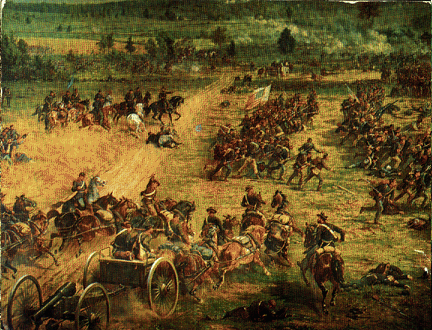
PANEL 1: Federal infantry and artillery hurry toward the fighting at The Angle. Major General W.S. Hancock is shown with his staff at the left center and beyond, at the top of the picture, is Little Round Top. 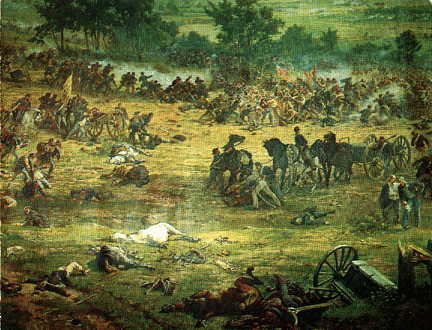
PANEL 2: Pickett's Charge reached its climax when the Confederates, dressed in brown, followed their red battle flags into the Union line at the Copse of Trees. These trees seen in the upper left, mark the Union center, the objective of Pickett's Charge. Confederate General Armistead falls mortally wounded to the right of the flags. 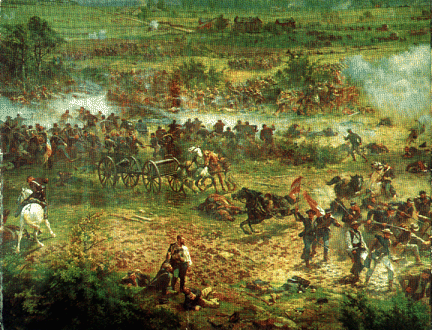
PANEL 3: Pickett's Charge reaches its climax at The Angle. Union troops, in the foreground, meet the advancing Confederates and hurl them back. The Codori buildings may been seen at the top of the card. 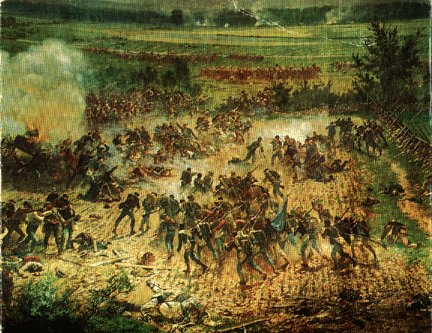
PANEL 4: The Angle, in the foreground, and the field of Pickett's Charge. The Confederates, beyond the exploding ammunition chest and advancing across the fields, have come from Seminary Ridge marked by the trees and smoke in the background. 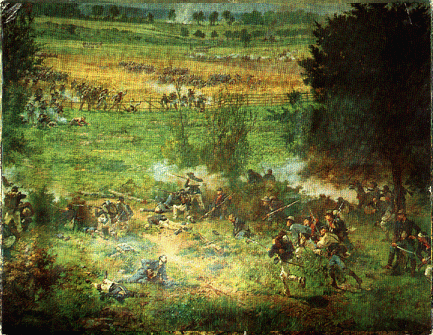
PANEL 5: Tradition holds that French artist, Paul Philippoteaux, identified himself with the Cyclorama by portraying himself as the Union officer standing beneath the tree to the right. He watches Pettigrew's Division advancing from Seminary Ridge. 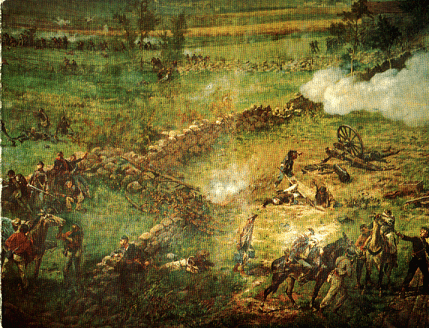
PANEL 6: The stone wall north of The Angle and the Bryan barn. Wounded are being evacuated on mules. 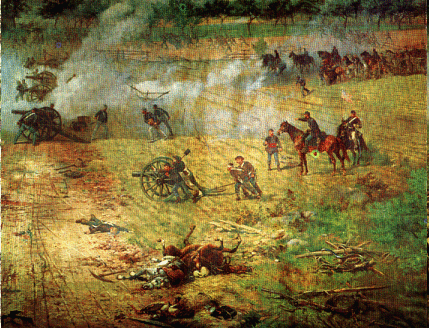
PANEL 7: Arnold's Rhode Island Battery in action north of The Angle and Copse of Trees. 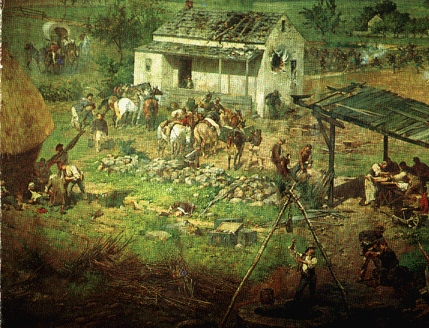
PANEL 8: Hospital. A surgeon amputates the leg of a wounded man in the shed on the right. 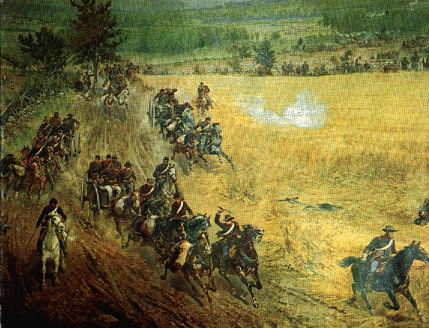
PANEL 9: A New York battery gallops towards the fighting near the Copse of Trees.
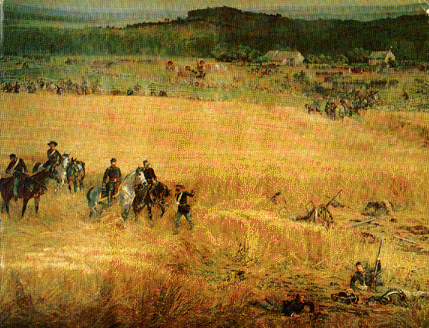
PANEL 10: Major General George Meade, commander of the Army of the Potomac, as shown with his staff on the right at the edge of the Wheatfield. Meade's Chief of Artillery, Brigadier General Henry J. Hunt, watches the fighting in The Angle from the gray horse in the foreground. | 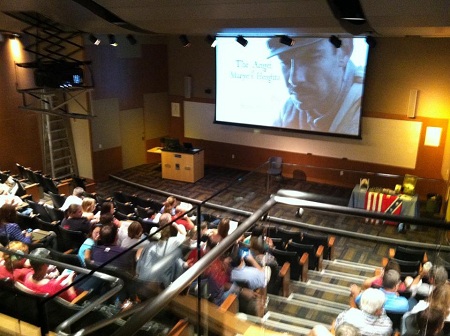






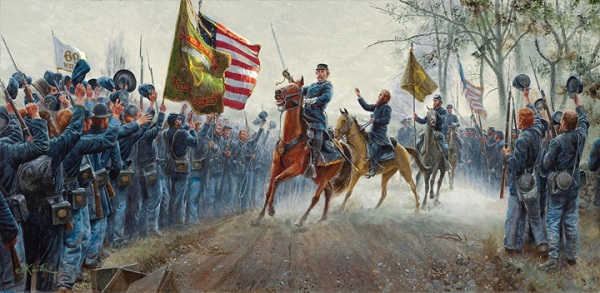
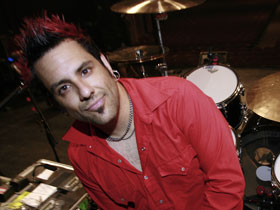 I am proud to announce that I am currently working on a very special book project with
I am proud to announce that I am currently working on a very special book project with 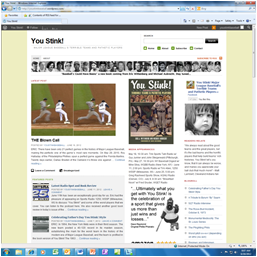 You may have noticed that posting here at Blog, or Die! has been less and less frequent over the last month or so. This has been due to the fact that the promotional commitments for "You Stink!" have required the majority of my attention. Eric and I are grateful for how well this book is doing as it has certainly exceeded both of our expectations.
You may have noticed that posting here at Blog, or Die! has been less and less frequent over the last month or so. This has been due to the fact that the promotional commitments for "You Stink!" have required the majority of my attention. Eric and I are grateful for how well this book is doing as it has certainly exceeded both of our expectations. 








